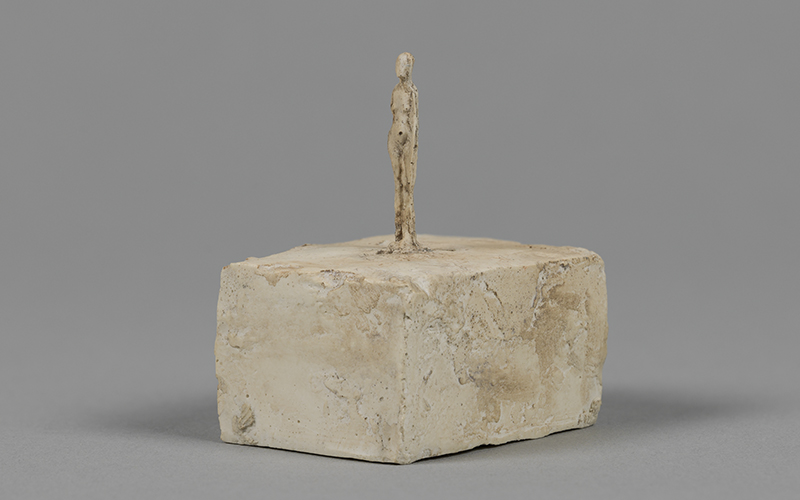Alberto Giacometti and Rui Chafes

An improbable and unprecedented meeting between these two unique sculptors. On display in Paris from 3 October onwards.
Over two hundred works by the artists Alberto Giacometti and Rui Chafes are placed side by side in this exhibition organised by the Calouste Gulbenkian Foundation delegation in France. The exhibition proposes an unprecedented dialogue between these two sculptors who never actually met in life (Chafes was born in Lisbon in 1966, the year of the death of the Swiss sculptor), but whose works display a surprising potential for resonance. On exhibition are 15 works by Alberto Giacometti – 11 sculptures and four drawings – and seven sculptures by Rui Chafes.
The project started out with research into the shared language of these two sculptors but put into practice in distinctive individual ways: the bronze, the roughness and the greys that define the work of Giacometti contrasting with the iron, the smoothness and the blacks that constitute the formal vocabulary of Rui Chafes.
With its title inspired on a verse by Giacometti – “Gris, vide, cris” –, this exhibition reveals the surprising scope of complicity between these two artists around such concepts as timelessness, intangibility and emptiness.
The Giacometti works chosen for display are fairly unknown with two never before exhibited, depicting small and apparently unfinished heads and small and medium scale figures, excavated and rendered intangible. In turn, the works of Rui Chafes were purpose made for this exhibition.
In his 1998 book The Silence of…, Rui Chafes wrote that “in conjunction with Joseph Beuys, A. Giacometti is perhaps the greatest post-war sculptor”, who took “the path of negation, of reduction, of austerity and asceticism” and who created “a scorched space”, opening the way to “modern sculpture: the sculpture of conscience”. Two decades later, Rui Chafes, who received the prestigious Pessoa Award in 2015, after having presented his anthological exhibition “The Weight of Paradise” at the Gulbenkian Foundation in the previous year, is to now establish a direct relationship with the artist that opened the doors to a form of sculpture that is also his own: the sculpture of conscience.
